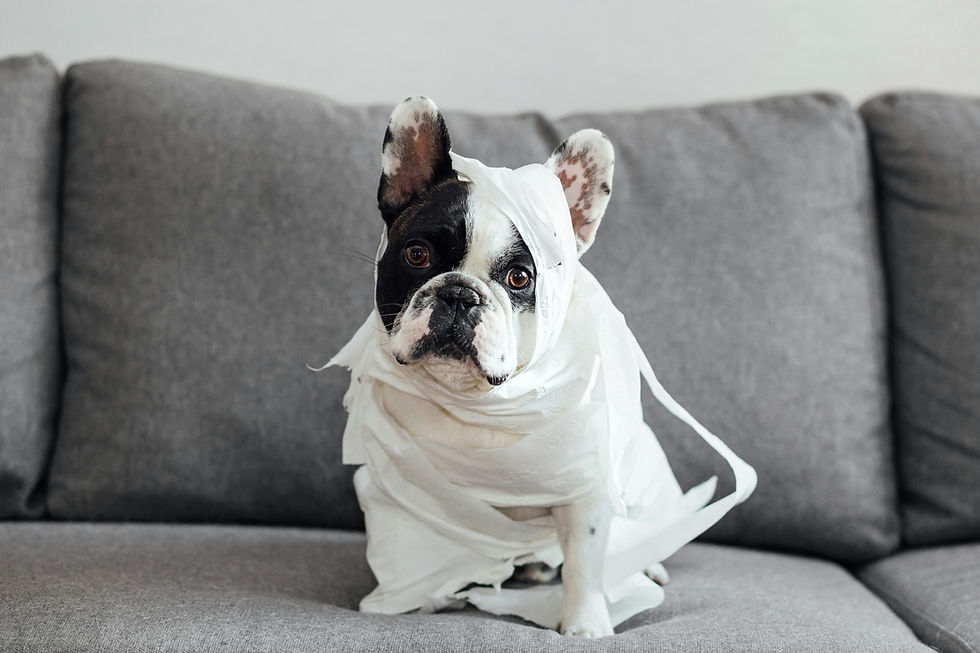Keeping Your Dog Healthy During the Hot Summer Months
- Nature's Diet

- Jun 25
- 3 min read

As temperatures rise during the summer, it's important to remember that dogs are far more sensitive to heat than humans. Unlike people, dogs don’t sweat through their skin—they primarily cool down by panting, which isn't always enough in extreme heat. Hot weather can quickly lead to dehydration, heat exhaustion, or even heatstroke, which can be life-threatening. Fortunately, a few simple steps can help you keep your dog safe, comfortable, and healthy throughout the warmer months.

1. Hydration is a Top Priority
Always ensure your dog has access to clean, cool water—both indoors and outside. Bring a portable water bowl when you’re on the go, and refill it frequently. If your dog isn’t a big drinker, consider adding ice cubes or offering dog-safe flavored broths to encourage hydration. Dehydration can sneak up fast, so it’s crucial to monitor their water intake daily.

2. Create Cool, Shady Spaces
Dogs should never be left in direct sunlight for extended periods. If your dog spends time outdoors, make sure there’s ample shade from trees, umbrellas, or a covered patio. You can also set up a kiddie pool filled with a few inches of water for them to splash and lie in. Indoors, use fans or air conditioning to maintain a cool environment, especially during heatwaves.
3. Avoid Midday Activity
The hottest parts of the day—typically between 10 a.m. and 4 p.m.—can be dangerous for dogs. During this time, the risk of overheating is at its highest. Instead, plan walks or outdoor play sessions for early morning or late evening, when temperatures are cooler. Even then, keep a close eye on your dog and don’t overdo it—shorter, gentler activities are safer in the heat.
4. Protect Sensitive Paws
Sidewalks, pavement, and sand can become scorching hot and may cause painful burns on your dog’s paw pads. A good rule of thumb: if the ground is too hot for your bare hand, it’s too hot for your dog’s feet. Stick to grassy areas or invest in dog booties designed to protect paws from heat. Regularly check for cracks, redness, or blisters on their paws after walks.
5. Cooling Gear Can Help
Several products are available to help dogs stay cool. Cooling mats, vests, and bandanas absorb and retain cold temperatures and can be a great addition to your dog’s summer routine. You can also give frozen dog treats, ice cubes, or frozen fruits like blueberries or watermelon (seedless and in moderation) as refreshing snacks.
6. Recognize the Signs of Heat Distress
Heat exhaustion and heatstroke can develop quickly and require immediate attention. Warning signs include:
Excessive panting or drooling
Lethargy or unresponsiveness
Rapid heartbeat
Bright red gums or tongue
Vomiting or diarrhea
Difficulty walking or collapse
If you observe any of these symptoms, move your dog to a cool area, offer water, and contact your veterinarian right away. Never attempt to cool them too rapidly with ice-cold water—that can cause shock. Lukewarm water and a fan are safer options until professional help is available.

7. Never Leave Your Dog in a Parked Car
This cannot be overstated: even with the windows cracked, a parked car can become dangerously hot in a matter of minutes. Temperatures can rise by 20–30°F in under 10 minutes, even on a mild day. Leaving a dog unattended in a car is both unsafe and illegal in many places.
Your dog relies on you for their safety, especially in extreme conditions. By staying proactive, adjusting your routine, and watching for signs of overheating, you can ensure your dog enjoys a happy, healthy summer. A little preparation goes a long way in keeping your canine companion cool, comfortable, and safe during the hottest months of the year.



